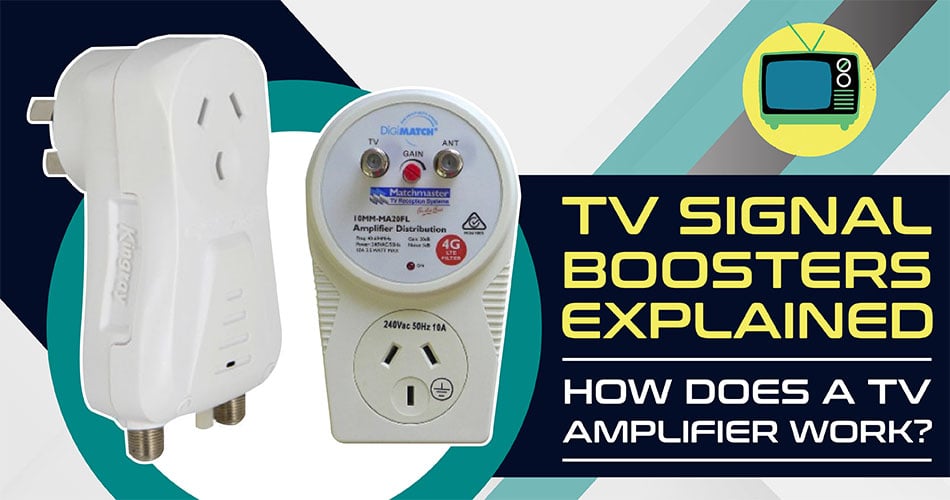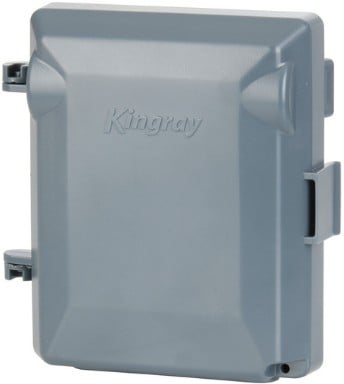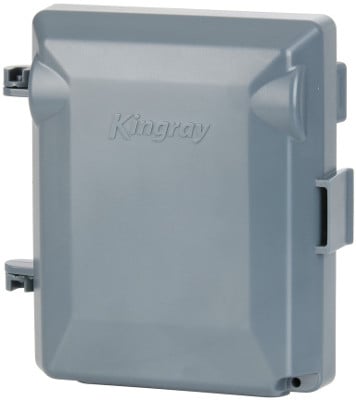TV Signal Booster Explained: How Does a TV Amplifier Work?
September 1, 2022

If you are looking for a way to improve your digital television reception, you will need a TV amplifier.
Cable antennas have been around for years, keeping up with TV technology. Today, antennas are commonplace. They are everywhere and come in a wide variety.
The newer digital HDTV antennas, together with an amplifier, are a great example. These allow you to watch a wide range of channels without paying for a subscription.
With amplifiers, they help overcome signal losses and correct them. When used right, you are less likely to experience and deal with signal issues.
This article will dive deep into the working principles of a TV amplifier. Read on to learn its components, applications, and amplifier vs signal booster.
What Is a TV Amplifier?
Cable resistance and signal splitting are the main cause of signal losses. This is where the TV amplifier comes into play.
A TV amplifier is used to bridge the gap between the antenna and TV without the use of a cable. It strengthens the signal and then distributes it evenly across all receivers (TVs).
The weak signal is then converted into a strong one to broadcast channels, pictures, and sound. This gives you access to clear digital TV shows.
Remember, though, that they do not convert a poor or weak signal into a good reliable one. Instead, they may be needed to fix signal issues and share the signal evenly over all receivers (TVs).
Moreover, it has the capability to catch all signals within an approx. 150 kilometer radius to boot. You can enjoy these benefits whether you are using standard analogue or HDTV.
A TV amplifier is also useful in remote areas such as caravan parks. If you are camping and experiencing weak signals, get yourself a signal booster to enjoy your favourite shows.
Preamplifier and Distribution Amplifier
An amplifier generally keeps signal properties the same while increasing the current. There are two types you need to consider to find a suitable TV amplifier for your needs. These are preamplifiers and distribution amplifiers.
A preamplifier compensates for signal loss from a long cable run. Meanwhile, a distribution amplifier boosts a signal to overcome losses due to splitters. Depending on your antenna installation, you might need a preamplifier or distribution amplifier. Or both.
How do you know you are getting the right one? The key is to get one with enough gain to make up for the signal you lose from the cable run.
What is ‘Gain’?
Gain is the ratio of output voltage to the input voltage of an amplifier. On any TV amplifier, it will tell you what gain to expect from it.
It can give you a low gain, a high one, or a variable gain. This allows you to adjust your gain accordingly, depending on how much you need.
When choosing a preamplifier, your gain must be equal to or greater than your signal loss. Suppose you have 30m of RG6 cable, which has 8dB of loss.
You need to ensure your amp is at least 8dB or stronger; amps range from about 12-30dB. But keep in mind that higher gain is not necessarily better. If you only have a 15dB loss on your cable run and you use a 30dB amp, you can overdrive your tuner with too much signal.
When do you need a preamplifier?
Is your TV signal so weak that your tuner can’t detect it with a long cable run? Is it occasionally interrupted by the weather or trees? An amplifier might not help, but a preamplifier can!
When do you need a distribution amplifier?
Do you have a TV in almost every room, or do you own a hotel or similar multi-room dwelling? Chances are good that you will need a distribution amplifier.
It helps increase the signal to overcome losses due to splitters. It works by delivering signals to multiple TVs and receivers in the building.
Here are some estimates of TV signal loss due to splitter use:
- If a 2-way splitter is used, you will lose 4dB of signal.
- For 3-way and 4-way splitters, you will experience an 8dB loss.
- Installations that have 8-way splitters lose 14-15dB of signal.
When do you need both?
There are cases where a specific TV antenna installation is needed. For instance, an antenna atop a 30m tower 25m from the house. This distance alone requires a preamplifier.
But if the same antenna cable feeds eight TV sets in the house, a distribution amplifier is also needed. This combination will maintain signal strength from the antenna to the multiple receivers.
Using a TV signal meter
A TV signal meter helps you align your aerial for the best digital reception. The meter connects directly to your antenna, and the LEDs show the signal strength.
Using one will let you know and see what and how much signal you are receiving.
Types of TV Amplifiers
There are two types of TV amplifiers:
- Masthead amplifiers
- Distribution amplifiers
Masthead amplifiers
This type of TV amplifier is a small plastic box attached to the lower part of your antenna. It is a device used to boost a TV signal at the TV aerial, where it is at its strongest.
It works by absorbing the signal received by the aerial. Then it sends it through the coaxial cable and to the TV, already amplified.
Masthead amplifiers are the most common type used in residential homes in Australia. They usually come in a black or grey colour.
Distribution amplifiers
This type of TV amplifier is usually a lot bigger than its masthead counterpart. If you need one, it must be installed inside your roof, a cupboard, or a service duct.
Distribution amplifiers (DAs) are used to divide a single video or audio source. Then it duplicates it into two or more identical copies. It supports digital, analogue, or a combination of both signal types.
DAs are mainly used in flats with multiple homes and TVs connected to one antenna. You might also need one if you have many TV wall points installed, and this causes your signal to weaken.
TV Amplifier vs Signal Booster
From a technical standpoint, there is no difference. Both the TV amplifier and signal booster function the same way.
They set out to ‘amplify’ or ‘boost’ your existing signal using various products. Thus, a TV amplifier with four outputs will do the same as a TV signal booster with four outputs on it.
Get Your TV Amplifier Here!
These TV amplifiers help in optimising the signal strength of your television. They can boost signals to passive indoor TV antennas for both digital and analogue.
Kingray Indoor Digital TV Amplifier
No longer available
Product code: JLT3285
A small plug-in-the-wall style unit that is simple to use. With no installation required, just plug it into your power socket in the wall.
You also get gain control to fine-tune your TV signals. With up to 20dB gain, you can have trouble-free reception in metro and regional areas.
UHF/VHF Indoor Digital TV Signal Amplifier
No longer available
Product code: JLT3281
This amplifier helps boost signals to passive indoor TV antennas (digital and analogue). It features independent manual UHF and VHF gain adjustments. Thus, it gives you greater control over your signal.
Standard PAL input and output connections are supplied with a mains adaptor. You can also power it by USB for power control (mini plug available separately).
TV Amplifier 20dB Gain Plug In 4G LTE Filter
No longer available
Product code: JLT3289
This TV amplifier with a 4G filter reduces interference from 4G mobile transmissions. Ideal for improving reception on a TV while removing interference from mobile signals.

Kingray Masthead Amplifier MHW35F with LTE/4G Filters & Power Supply
Product code: JLT3251
A big part of the Australian broadcast spectrum is being diverted to 4G/LTE phone service. To guard against this, the Kingray masthead amplifier is designed to deliver a VHF & UHF TV band gain.
It provides user-selectable FM radio filters, fixed pagers, and a new 4G/LTE band. A great product proudly manufactured in Australia!

Kingray VHF / UHF Masthead Amplifier
Product code: AN2125F
This Australian-made amplifier will work in both metro and regional areas. It covers both bands exceptionally well with a 25dB gain receiver.
Even better, it has the 4G/LTE filtering built into the amplifier. This reduces unwanted interference from phone towers which can affect some TV broadcasts.
Note: Kingray Power Injector also required – AN2228, AN2205, or AN2206.
The Bottom Line
If your signal is poor, it can be amplified to so you can get a good picture. You mostly need a TV amplifier to do the job.
But it is also important to note that using the wrong amplifier can worsen things. Take your time to consider which type of TV amplifier suits your needs best. This includes the gain and if you need an masthead or distribution amplifier, or both.
© Electrotech Brands Pty Ltd 2022


Write a Comment
You must be logged in to post a comment.